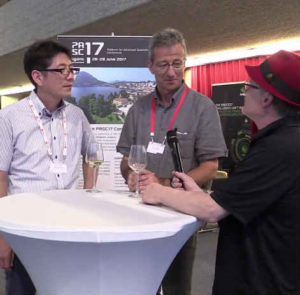 In this video from PASC17, Yasuhiro Idomura from the Japan Atomic Energy Agency and Laurent Villard from EPFL discuss the computational challenges of developing Fusion reactors.
In this video from PASC17, Yasuhiro Idomura from the Japan Atomic Energy Agency and Laurent Villard from EPFL discuss the computational challenges of developing Fusion reactors.
“Numerical plasma physics models are used to improve our understanding of transport, instability growth and other poorly understood phenomena encountered in the experimental devices edging toward viable fusion energy. Since computational expense imposes a major limitation on accurate physical modeling, computational resources must be used as efficiently as possible. Here, we examine four recent features in the particle-in-cell (PIC) code ORB5: a structural change to optimize calculations on “gyropoints” (rather than gyroaveraged particle position); array structure changes; precomputational particle sorting; and the implementation of a hybrid parallelization using OpenMP (in addition to the existing MPI parallelization). At PASC17, we demonstrated the speedup, and thus time and resource savings, achieved by implementing these changes in the major modules of PIC gyrokinetic codes.”




